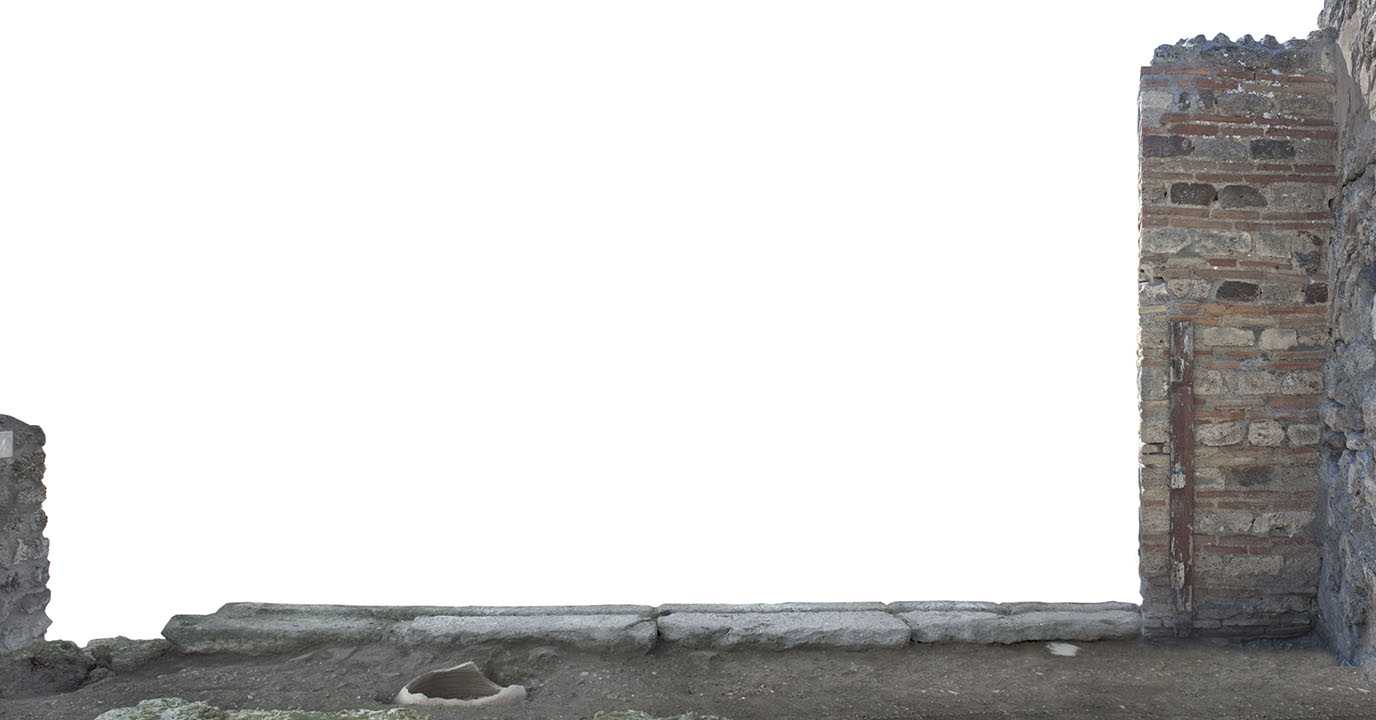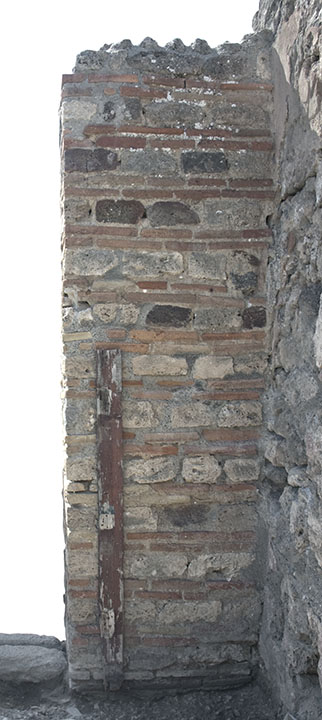West Wall
Description
Henrik Boman & Monika Nilsson
The west wall constitutes the short wall to the north and the large door opening with lava threshold.
The northern section, the opus listatum wall, is built in brick, cut limestone and cruma. The wall abuts to the uppermost of a sequence of three earlier plaster layers on the north wall. We can therefore assume that the original W wall was of lesser thickness than the present listatum wall. Under assumption that the walls are standing today as originally designed - as the remains of plaster in situ on the façade indicate - the room must have been redecorated before the listatum wall was constructed, i.e. before the large door was opened up to the street.
The southern part of the wall, that must have filled the gap between the threshold and the line of the south wall, is completely destroyed. The wall is visible in a pre-war photo (García y García 2006, fig. 92), showing a wall with a plastered surface continuing northwards. The end of the wall is not visible in the picture.
Suggestion for the phase sequence of room 14i: The room seems to have had at least three, possibly four, decoration phases (preliminary 1st, early 3rd and one, possibly two, 4th style phases) and two structural phases as triclinium (presumably 1st, 3rd and a 4th style) and as shop (4th style). All the preserved plaster layers extend behind the opus vittatum of the western wall. The latter was constructed when the room was remodelled as a taberna and the façade towards Via Vesuvio was opened.
Today we cannot say how the southern part of the W wall appeared. It was most likely a short wall extending between the threshold and the S wall. The location of a small door in the threshold indicates that some kind of wall existed in this corner of the room. In Presuhn´s plan, the wall continues further north; this might be an indication for a better preserved wall at the time of the excavation. The wall is also shown in the same manner in Eschebach´s plan. The south wall that fell in 1980 might have continued northwards above the lime stone drainage. However, the cutting in the threshold for a wooden door frame indicates that the wall could have been built in lesser material, and therefore no traces of the wall exist today.


